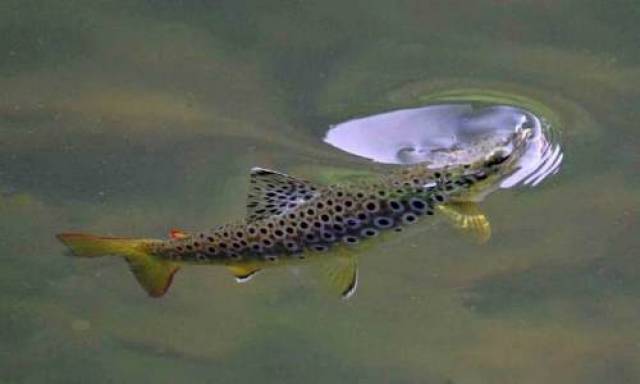#BrownTrout - There is a high level of genetic diversity in brown trout populations evident from all catchments studied.
That’s according to the findings of a groundbreaking ‘citizen science’ research into the genetic makeup of Ireland’s brown trout and sea trout stocks, presented at a conference in Athlone yesterday (Tuesday 17 October).
Inland Fisheries Ireland (IFI), in collaboration with Queen’s University Belfast (QUB), presented the findings of a three-year research study entitled ‘Understanding Brown Trout - Genes, Ecology and Citizen Science’ at a one-day conference at the Hodson Bay Hotel.
IFI says the findings of the study will provide valuable information on how genetic diversity is distributed among trout populations within certain catchments.
A succession of expert speakers presented the findings, which encompassed ‘citizen science’ — research conducted in whole or in part by amateur or non-professional anglers and participants — as well as detailed genetic research.
The main areas in the study included selected Dublin rivers, the Moy catchment area in Co Mayo, and the Shannon system (Lough Derg, Lough Ree and Lough Sheelin), in addition to Lough Corrib and Lough Ramor.
Among the key findings presented today were:
- There is a high level of genetic diversity in brown trout populations evident from all catchments studied. For example, there are 27 genetic groupings of brown trout populations in the Moy catchment, 17 in the Liffey, and 34 in the Lough Ree catchment, while there are 40 in the Lough Derg catchment.
- Western tributaries keep Lough Conn well stocked with brown trout, in particular the River Addergoole complex and River Deel system (together they contribute 77% to adult stocks of the lake).
- Key contributors of brown trout to Lough Ree are the River Inny and the Camlin River (over 80%).
- Barriers and poor water quality were found to be significant factors in unravelling genetic diversity patterns.
The project also highlighted how successful ‘citizen science’ can be with IFI, QUB and angling clubs working well together. Indeed, ‘citizen science’ working with angling communities from across all three main project areas was critical to the success of the project.
Speaking after the conference, Dr Cathal Gallagher, IFI director of research and development, said it was “a huge success and the findings of the three-year study will be of interest to anglers, conservationists, fishery managers and the wider public.
“More crucially, it has been an exciting and exhaustive project that will have real practical applications and will assist Inland Fisheries Ireland in making the correct and most cost effective fisheries management and conservation decisions.”































































